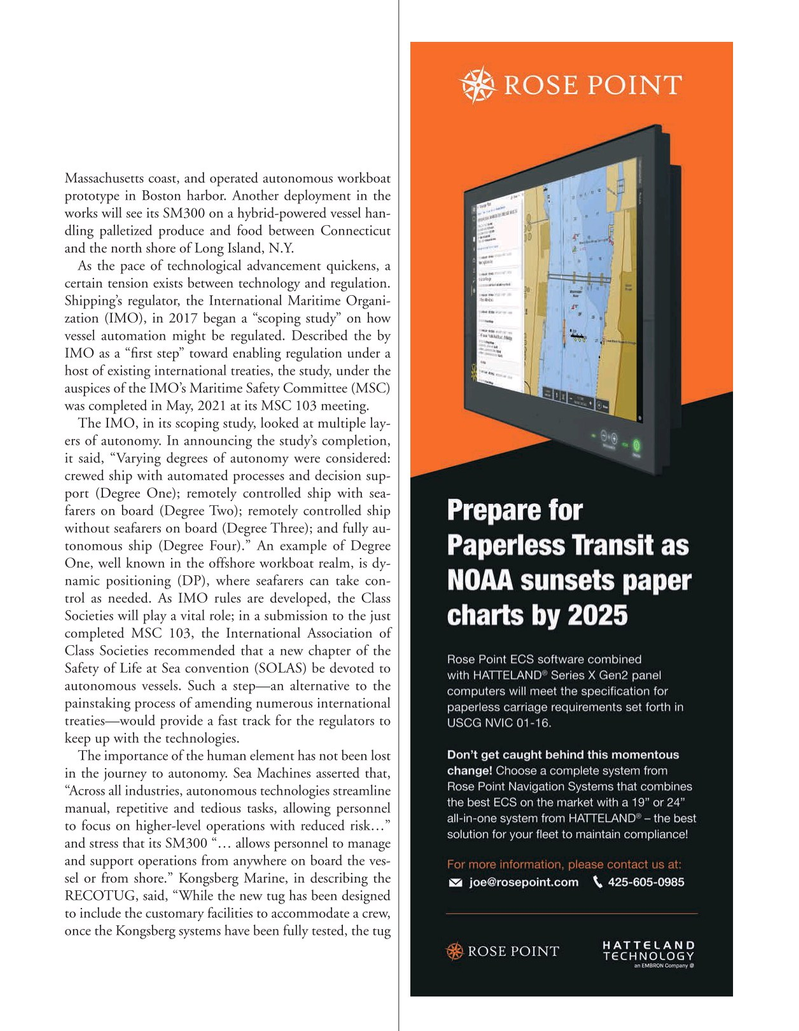
Page 23: of Marine News Magazine (July 2021)
Propulsion Technology
Read this page in Pdf, Flash or Html5 edition of July 2021 Marine News Magazine
Massachusetts coast, and operated autonomous workboat prototype in Boston harbor. Another deployment in the works will see its SM300 on a hybrid-powered vessel han- dling palletized produce and food between Connecticut and the north shore of Long Island, N.Y.
As the pace of technological advancement quickens, a certain tension exists between technology and regulation.
Shipping’s regulator, the International Maritime Organi- zation (IMO), in 2017 began a “scoping study” on how vessel automation might be regulated. Described the by
IMO as a “? rst step” toward enabling regulation under a host of existing international treaties, the study, under the auspices of the IMO’s Maritime Safety Committee (MSC) was completed in May, 2021 at its MSC 103 meeting.
The IMO, in its scoping study, looked at multiple lay- ers of autonomy. In announcing the study’s completion, it said, “Varying degrees of autonomy were considered: crewed ship with automated processes and decision sup- port (Degree One); remotely controlled ship with sea- farers on board (Degree Two); remotely controlled ship without seafarers on board (Degree Three); and fully au- tonomous ship (Degree Four).” An example of Degree
One, well known in the offshore workboat realm, is dy- namic positioning (DP), where seafarers can take con- trol as needed. As IMO rules are developed, the Class
Societies will play a vital role; in a submission to the just completed MSC 103, the International Association of
Class Societies recommended that a new chapter of the
Safety of Life at Sea convention (SOLAS) be devoted to autonomous vessels. Such a step—an alternative to the painstaking process of amending numerous international treaties—would provide a fast track for the regulators to keep up with the technologies.
The importance of the human element has not been lost in the journey to autonomy. Sea Machines asserted that, “Across all industries, autonomous technologies streamline manual, repetitive and tedious tasks, allowing personnel to focus on higher-level operations with reduced risk…” and stress that its SM300 “… allows personnel to manage and support operations from anywhere on board the ves- sel or from shore.” Kongsberg Marine, in describing the
RECOTUG, said, “While the new tug has been designed to include the customary facilities to accommodate a crew, once the Kongsberg systems have been fully tested, the tug

 22
22

 24
24
